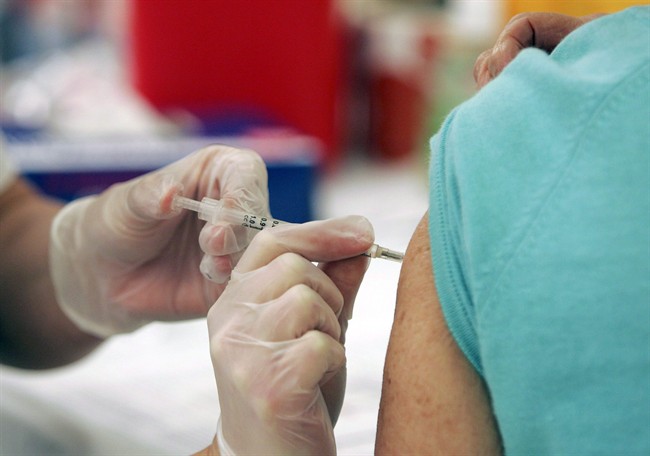TORONTO – This year’s flu vaccine offers little or no protection in Canada against becoming sick enough to require medical care, a study published Thursday suggests.

The research, based on data from British Columbia, Alberta, Ontario and Quebec, found the vaccine offers most people virtually no protection against the strain that’s causing the lion’s share of the illness this year, H3N2.
There weren’t enough cases of flu caused by H1N1 or influenza B viruses to assess whether the vaccine would have been more protective against them. That may change as the flu season progresses – it is not uncommon to see late-season surges of influenza B illness. But for now, this year’s shot’s performance looks pretty dismal.
“I would say overall it’s signalling no protection,” said lead author Dr. Danuta Skowronski, an influenza expert at the British Columbia Centre for Disease Control.
The study, an interim estimate of this year’s flu vaccine effectiveness, was published Thursday in Eurosurveillance, an online journal belonging to the European Centre for Disease Control.
READ MORE: This year’s flu shot may not be the right match, CDC tells doctors
Skowronski said the message people should take from the study is that if they are at high risk of developing pneumonia or getting seriously ill if they contract influenza, they should take other steps to protect their health.
“There’s still H3N2 circulating. So probably the most important message to get out now is for high-risk individuals not to count on vaccine to have protected them this season,” she said, noting those steps include avoiding people who are ill and going to the doctor to get a prescription for a flu antiviral drug if they become infected.

Get weekly health news
“Other backup options should come to the fore because the vaccine protection is so disappointing this year.”
Health authorities in other jurisdictions have been putting out that message as well. On Thursday, the New York City Health Department issued a health alert notification urging doctors citywide to prescribe influenza antiviral medications to all high-risk or severely ill patients suspected of having the flu.
READ MORE: 5 ways to protect yourself from the flu
An interesting finding of the study is that people who did not get a flu shot last year appeared to get more protection from the vaccine this year than people who got shots both years. For those people, the vaccine appeared to offer about 43 per cent protection against developing influenza that required medical help.
There is an emerging school of thought that repeated vaccination in some circumstances may actually undermine the protectiveness of the vaccine. Skowronski said the area needs additional research.
Earlier this month the U.S. Centers for Disease Control published interim vaccine effectiveness data for that country. The flu season south of the border has been very similar to the one in Canada – almost all caused by H3N2 – and their early findings suggested the vaccine lowered a recipient’s risk of contracting the flu and getting sick enough to need medical care by 23 per cent.
That’s well below the 50 to 70 per cent effectiveness estimate that is often cited for flu vaccine.
The Canadian estimate was a negative figure, minus eight per cent. That doesn’t mean the vaccine made people who received a flu shot more susceptible to getting the flu. The confidence intervals – the range within which the true number falls – went from well below zero to 23 per cent. But because the numbers cross zero, the study did not find a statistically significant benefit of the vaccine.
READ MORE: Nasty H3N2 flu season worsens as cases rise across Canada
Skowronski said that in statistical terms, the closer you get to showing that an intervention had no effect, the more people you need in your study to come up with narrow confidence intervals. For instance, to show a one per cent benefit of the vaccine, the researchers would have needed one million people in the study – an unachievable feat. They actually had nearly 861, which is a good size for an interim analysis of flu vaccine effectiveness.
Still, Dr. John Spika of the Public Health Agency of Canada cautioned against drawing too many distinctions between the U.S. findings and this Canadian study because the confidence intervals are so wide.
“All you can say is ‘It’s not good,”‘ said Spika, director general of the agency’s centre for immunization and respiratory infectious diseases.
Skowronski said the lower effectiveness in Canada may relate to the fact that here essentially all the H3N2 viruses that have been tested are not a good match for the H3N2 virus included in the flu shot. In the U.S., about one-third of the viruses seen have been a match for the H3N2 component of the vaccine.
As well, the U.S. study included more children. That could influence the results because children are less likely to have had repeated vaccinations and because they are more likely to get the live-virus vaccine FluMist, which generally induces a better response in children than the killed-virus vaccine most Canadian adults receive.







Comments